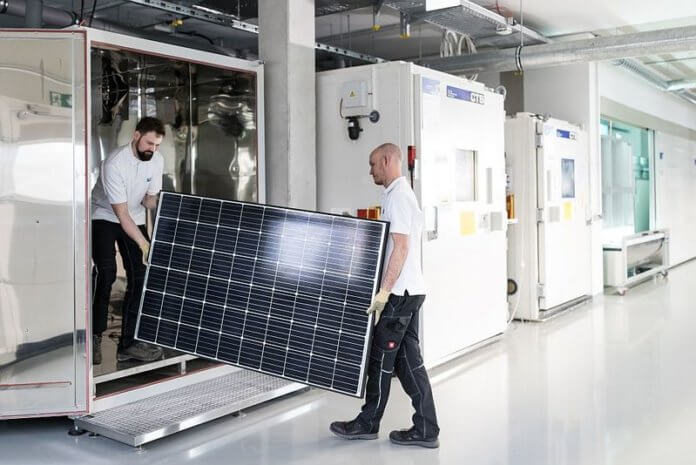The Center for Solar Energy and Hydrogen Research Baden-Württemberg (ZSW) has developed a heavy-duty test that provides more accurate information about a solar module’s resistance to potential-induced degradation (PID).
The phenomenon known as PID occurs when leakage currents caused by a difference in voltages between solar cells and the grounded frame adversely affect a photovoltaic module’s efficiency.
Simulating decades of operation, these stress tests have shown that the performance of solar modules remains practically unimpaired even after 60 calculated years of operation when equipped with embedding materials to prevent PID. Long-term forecasts like this are important to the investors, banks, manufacturers and project developers that assess the feasibility of solar projects.
Engineers have known for more than 10 years that PID can occur in silicon solar cells. Embedding materials have been found to reliably prevent the partially reversible effect of PID, as the results of tests on recently manufactured modules confirm. They were carried out to the IEC TS 62804-1 standard, typically with 1,000 V applied to the system and at temperatures of 85℃ over a period of 96 hours.
“With our new test, we will be able to determine the resistance to PID with unprecedented precision,” says Peter Lechner, head of SOLAB, the ZSW’s photovoltaic testing laboratory.
“The embedding material in the solar modules has a major influence on their resistance to PID. Modules equipped with POE are absolutely stable in that respect,” he adds.
ZSW scientists joined forces with Specialized Technology Resources España and CS Wismar to address this question as part of a European research program called SolarEraNet. The partners in this consortium tested modules with two types of cells: a resistant version and a variant that is slightly more susceptible to PID. Both cells were combined once each with the standard EVA (ethylene vinyl acetate; EVA-1) embedding material, an improved, highly resistive EVA (EVA-2) and with a polyolefin elastomer (POE).
All investigated variants had passed the customary IEC standard PID test with 1,500 V. They continued to perform at more than 95% of their capability after the trial, with the efficiency loss ranging between 1% and 2.4%. Even extending the test’s duration to 600 hours did not result in any significant deterioration. However, this test does not allow for more nuanced statements about a module’s resistance to PID.
Photo: The ZSW module-testing laboratory where solar modules undergo the new heavy-duty trial to gauge their resistance to PID




